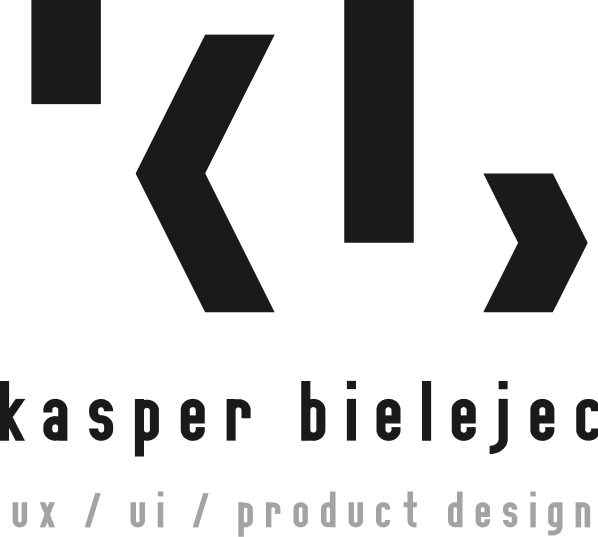Summary
In my role as UX Design Manager, I led the redesign of Listonic's Banner Expand ATL (Add-To-List) advertising system—a revenue driver affected by user experience issues and technical instability. Through user sentiment analysis across multiple channels and implementing user-centered design principles, I eliminated dark patterns while achieving 350% CTR improvement and 318% increase in CTR+ATL performance.
Mission
Expandable Banner advertising format generated user frustration through dark patterns and accidental interactions while underperforming in revenue metrics. Leading my design team, I was tasked with redesigning this monetization feature to eliminate user friction, boost advertising effectiveness, and streamline operational processes. The challenge was converting a feature that triggered user complaints about unwanted product additions into a high-performing revenue engine.
My Contributions
My leadership included the full project lifecycle, from user research strategy through implementation oversight. I designed sentiment analysis programs, design decisions that eliminated dark patterns, and managed collaboration between design, development, sales, and monetization teams. My responsibilities included research program design, cross-functional team management, design leadership, and stakeholder alignment while balancing user experience improvements with business revenue requirements.
🚀 Impact
Key metrics delivered by redesign:
Revenue Performance
• 350% CTR improvement (0.57% → 2.00%) driving revenue growth
• 318% CTR+ATL increase (0.75% → 2.39%) demonstrating enhanced user engagement
• 86% viewability achievement ensuring advertiser satisfaction
• 390% ATL-to-impressions (+0.61 percentage points) maximizing conversion effectiveness
Cross-Platform Performance
• Android Banner ATL: 0.67% → 2.03% CTR (+203% growth)
• Android Banner Expand ATL: 0.40% → 2.01% CTR (+402% growth)
• iOS Banner ATL: 0.19% → 0.36% CTR (+89% growth)
• iOS Banner Expand ATL: 0.32% → 0.37% CTR (+16% growth)
Operational Impact
• Eliminated most user complaints about unwanted product additions
• Streamlined sales operations through unified format standards
• Reduced technical maintenance costs through architecture simplification
• Enhanced brand reputation through ethical advertising practices
STEP 1: User Research & Problem Discovery
Research Program Design
First step was a research program to understand user frustration with the existing advertising system. Rather than relying on assumptions, I created a systematic approach to gather user feedback across multiple touchpoints and platforms.
Research Architecture
• 12 months Google Play and App Store reviews analysis using BERT topic modeling
• Examined customer support tickets for complaint patterns
• Social Media sentiment analysis using AI tools across forums and social platforms
• Behavioral Data Analysis: Clarity session recordings synced with Firebase analytics
Dark Pattern Problem Discovery
User Experience Issues
• Accidental Interactions: 487 complaints on products appearing on shopping lists
• FAB (Floating Action Button) placement created accidental banner clicks
• Swipe-Triggered Disruption: Automatic ad expansion interrupted scrolling behaviour
• No confirmation feedback or validation when products were added via advertisements
Technical Problems
• JavaScript-webview communication caused flickering and performance issues
• Design Fragmentation: Ads appeared disconnected from native app aesthetic
• Loading State Gaps: Missing placeholders created interaction timing conflicts
User Sentiment Analysis Results
The analysis revealed concerning patterns about user trust and engagement
Key Research Findings
• 18.9% of negative reviews mentioned advertising-related frustrations
• 14.5% reported synchronization issues often compounded by ad-related confusion
• Android users showed 5x higher negative review rates about advertising
• Users sharing lists exhibited strongest negative sentiment due to financial implications
STEP 2: Design Framework & Solution
Design Philosophy Development
Based on research insights, I established core design principles to guide solution development:
User-Centric Approach
• Eliminate confusion by making all ad interactions explicit and user-initiated
• Seamless integration with native app design language for improved trust and acceptance
• Clear feedback loops for all advertising-related actions and outcomes
• Behavioral consistency across all product addition methods throughout the app
Business Goals
• Optimize engagement through strategic visual hierarchy and compelling CTA design
• Maximize viewability through thoughtful placement and native design integration
• Operational efficiency through standardized format specifications and workflows
• Sustainability through simplified architecture and reduced maintenance overhead
Solution Architecture Design
Interaction Model Transformation
• Modal-based experience for expanded content, preventing interface disruption
• Hierarchical action priority placing CTA buttons above expansion actions
• Predictable interaction patterns with clear visual indicators for all possible actions
Call-to-Action Enhancement
• Added Contextual CTA variety beyond generic "plus" icon
• Consistent patterns matching established app interaction paradigms
Native Design Integration
• Design system alignment ensuring visual cohesion with existing app interface
• Adaptive theming supporting both light and dark mode user preferences
• Feedback systems providing clear confirmation for all user actions
STEP 3: Performance Analysis & Optimization
Metrics Framework
We established performance tracking to measure success across user experience and business objectives.
Primary Success Indicators
• CTR performance measuring user engagement and advertiser value
• CTR+ATL combined metrics tracking user interaction patterns
• Viewability rates ensuring advertiser satisfaction and premium pricing sustainability
• User sentiment tracking through review analysis and support ticket monitoring
Operational Excellence Metrics
• Revenue per impression validating monetization effectiveness
• User retention analysis measuring long-term engagement impact
• Sales efficiency through campaign setup time and error rate reduction
• Technical maintenance cost reduction through architecture improvements
Continuous Improvement Process
Iterative Optimization
• Via A/B testing new design achieved 2x CTR improvement over legacy
• CTA optimization for maximum engagement across different user segments and contexts
• Revenue optimization through ad refresh timing and placement tests
Business Impact & Value
Growth Metrics
• 350% CTR improvement creating revenue increase and advertiser satisfaction
• 318% CTR+ATL enhancement demonstrating improved user engagement and conversion
• 86% viewability achievement ensuring pricing capability and advertiser retention
• 400% ATL-to-impressions improvement maximizing conversion efficiency and user value
Platform Performance
• Android reaching reaching 2.03% CTR with Banner ATL
• iOS Consistent Growth, proving cross-platform design effectiveness
• Combined Performance maintaining 1.44% CTR+ATL average
Conclusion
By prioritizing user experience through research, eliminating dark patterns, and implementing ethical design principles, we achieved improvements in both user satisfaction and revenue performance.
The 350% CTR improvement and 86% viewability achievement demonstrate the impact of user-centered design on long-term business success.
